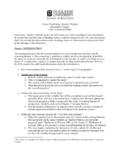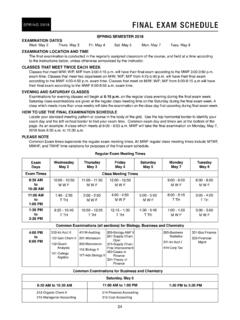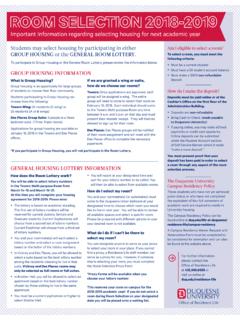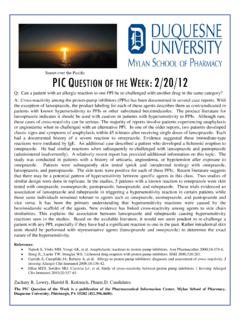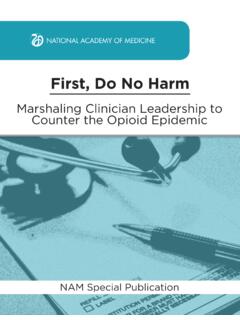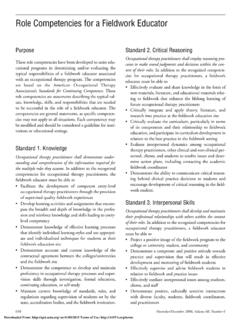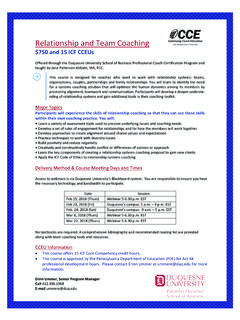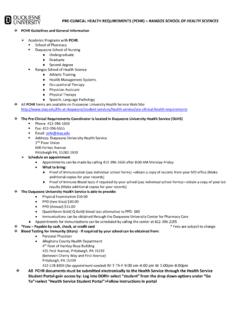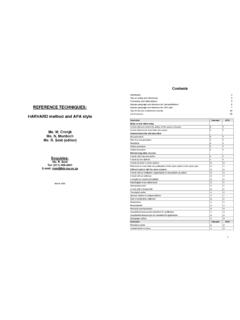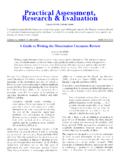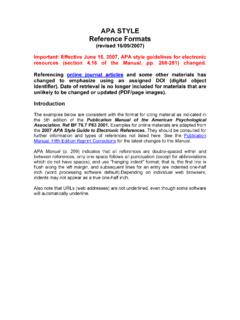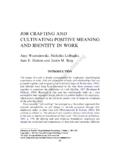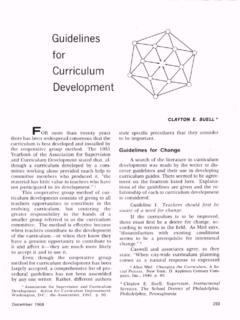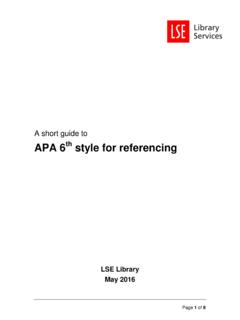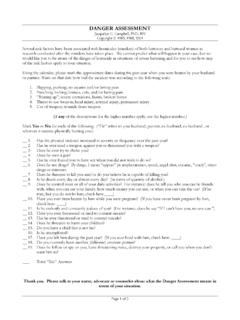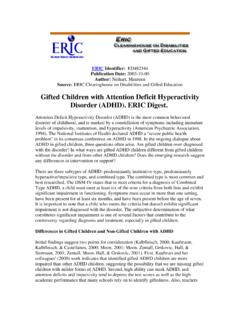Transcription of research - Duquesne University
1 School Psychology doctoral Program dissertation Outline1 Final Version 6/2/2006 Instructions: Double Underline means the item should be a title or heading in your dissertation . Do not deviate from the order of headings unless explicitly directed to do so by your dissertation chair. Do not limit the dissertation to these headings, however. dissertation resources are listed on the last page of this document. Chapter I: INTRODUCTION The introduction describes the research problem or research question and lays out the reasoning behind it. This reasoning is sometimes called a theoretical argument.
2 It justifies the study, in terms of a need for the information it will provide, in order to develop or test a theory or to understand, explain, or further describe an educational phenomenon. Refer to the APA manual for additional information about the introduction. 1. General description of the areas of concern set the stage (3-4 paragraphs). 2. Significance of the Problem a. Include explicit statement of significance specific to the topic studied. b. Why is it important to conduct the study? c. This section will probably not be very long but it should be very powerful! d. What theoretical/practical reasons are there for wanting to know the answers to the research questions?
3 3. Analyze the Theoretical Basis for the Study a. The organization of the variables that will be considered to answer the research questions likely will have a theoretical basis. Explicate how the most appropriate theoretical perspective helps conceptualize the study. Competing theoretical perspectives should be analyzed in Chapter 2 Literature Review. b. Include theoretical definitions of important terms and all constructs (should not include operational definitions that will appear in the methods section). 4. Synthesize and Critically Analyze the Very Relevant Literature a.
4 Make the argument for the dissertation using the studies in the existing literature that incorporate all the major variables or constructs that are present in the proposed study (Rudestam & Newton, 2001, p. 63). Figure (Rudestam & Newton, 2001, p. 64) provides a visual conceptualization of relevance of literature. b. This may require examining the intersection of only a subset of variables and repeating the process with another subset of variables because the literature does not have all variables incorporated in extant research . 1 This outline was adapted from the dissertation outline prepared by the Ball State University School Psychology Program 5.
5 Problem Statement a. State the purpose of the research explicitly and succinctly. b. The introduction should lead up to and provide support for the problem statement. 6. research Questions and Hypotheses a. Ordinarily the researcher will have a few research questions, with a number of hypotheses for each. b. Do not operationalize variables in this section. Use theoretical questions and hypotheses written in the language of constructs. c. A research question should (a) be in the form of a question, (b) suggest a relationship among constructs, and (c) be empirically testable. d.
6 Hypotheses are declarative statements written in the expected or predicted direction (usually an alternate hypothesis). Such hypotheses are called research , scientific, or theoretical hypotheses and are written in the present tense. e. Example adapted from Rudestam & Newton (2001, pp. 67-68). i. research Question: How do adolescents with dyslexia cope with the effects of their learning disabilities? ii. Hypothesis 1: Adolescents with dyslexia who accept the diagnosis of having a learning disability use more problem-focused coping strategies than adolescents with dyslexia who reject or deny the diagnosis.
7 Iii. Hypothesis 2: Adolescents with dyslexia who accept the diagnosis of having a learning disability rely more on social support than adolescents with dyslexia who reject or deny the diagnosis. iv. Hypothesis 3: Adolescents with dyslexia who reject or deny the diagnosis of having a learning disability use more avoidant coping strategies than adolescents with dyslexia who accept the diagnosis. v. Note how hypothesis 2 and 3 are worded so that the coping strategy hypothesized matches the specific group. Also note that terms are not operationalized here. 2 Chapter II: LITERATURE REVIEW This chapter reviews what has already been written in the field on the topic of the research .
8 The literature cited should support the theoretical argument being made and demonstrate that the author has a grasp of the major ideas and findings that pertain to his or her topic. Refer to APA manual for additional information concerning literature reviews. 1. Historical Background a. Put things in perspective. This is more than just a chronology and does not necessarily have to include every detail since day one. b. What are the major issues, controversies, etc. that impact your study. Include background on all relevant variables. 2. Theory Relevant to research Questions/Hypotheses.
9 A. What theoretical models/perspectives inform your research ? b. Compare and contrast competing theories and justify the theoretical foundation of the dissertation . c. Describe how the theoretical foundation of the dissertation applies to the problem. 3. Current Empirical Literature Relevant to research Questions/Hypotheses a. Include in this section: i. literature relating to individual variables ii. literature relating to specific combination of variables (specifically examine background and relevant background literature as shown in Figure ) relevant to the dissertation b.
10 This should be more than a listing of studies. What common thread holds them together? Use transitions to effectively tie one section with another. c. Incorporate discussion of strengths/weaknesses of methodology in previous studies and which you are building on/hoping to avoid/improve upon in your study. 4. Use headings and subheadings liberally to organize this section. Consider making a concept map of relevant literature for organizational purposes (do not include in the dissertation text, however). This section should be reflective of deductive reasoning; starting broadly and narrowing the focus as the chapter progresses Chapter III.
